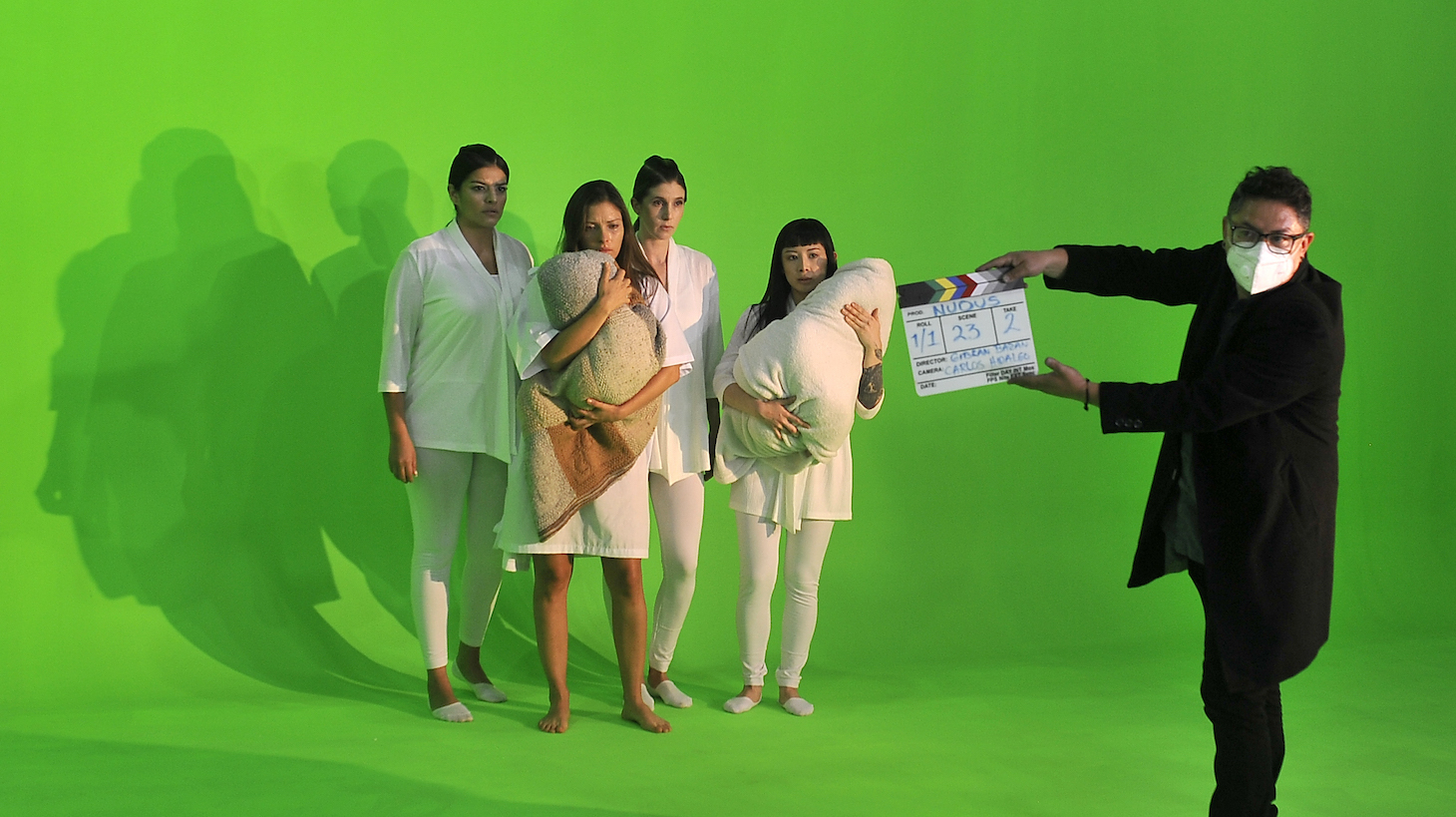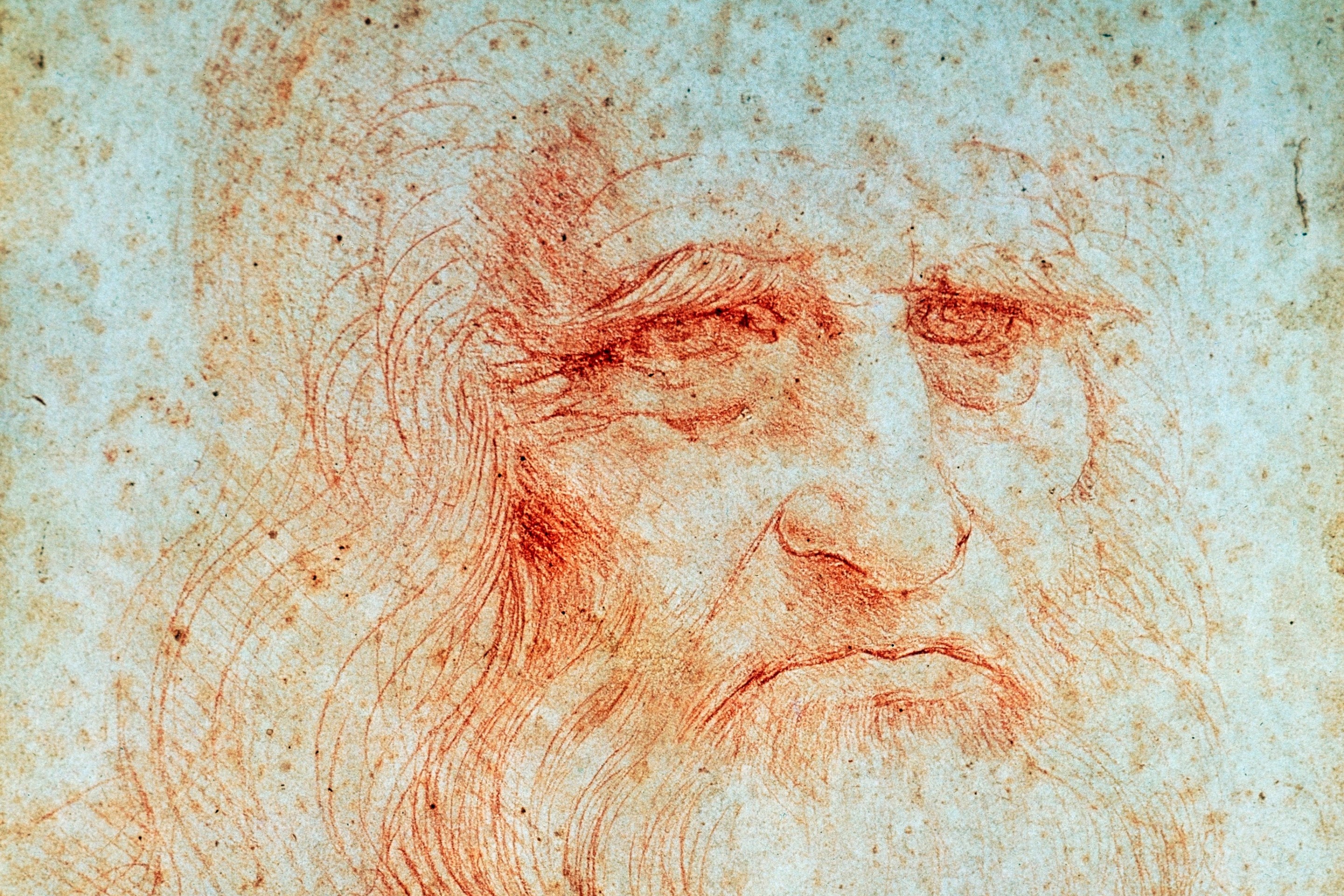In one of cinema’s earliest recordings, Auguste Lumière and his wife Marguerite are seen feeding their baby daughter Andrée. The footage, shot by Louis Lumiére, lasts only about 40 seconds or so. Presented as part of the Lumière Brothers’ first-ever commercial public film screening in a 10-film program on Dec. 28, 1895, and given the title Repas de bébé, the short made an impression that has persisted more than a century. A perfect representation of what the Lumières called "Actualités,” the film resembles the kind of home movies that became a staple of cinematic form. Maxim Gorky and Georges Méliès would both later describe their experiences attending that first screening at the Salon Indien in the basement of Paris’s Grand Café, recalling the particular fascination they and the rest of the audience had in seeing leaves on trees in the background moving in the wind. There, at the birth of cinema, the medium made itself indispensable—not by showing people something they’d never seen before, but by capturing something of the quotidian and making it present.
The question of what cinema captures and how it captures it has been on my mind a lot in recent years as I watch the art form being degraded and discarded at the whims of capital and the winds of social and technological change. It was on my mind as I watched the first three parts of a planned four-part YouTube series by Jonas Ussing, titled “‘No CGI’ is really just INVISIBLE CGI.” In the series, the Danish visual effects artist lays into Hollywood and the entertainment media complex for perpetuating lies about the use of digital visual effects in modern movies. Top Gun: Maverick, he points out as an example, is one of many films marketed on the basis of its practical stunts and special effects. “Everything you see in this film, obviously it’s for real,” says Tom Cruise onstage at Comic-Con in one clip. Except, as Ussing demonstrates, despite actually filming in real planes up in the air, in almost every shot in the final film, those planes have been either heavily modified or entirely replaced by CGI.
Throughout the series, Ussing gives example after example of filmmakers, actors and others exclusively highlighting all the practical work done on their films, sometimes outright claiming that what you’re seeing is not CGI, only for it to turn out that nearly everything that ended up onscreen was, indeed, CGI. In many cases, practical stunts were done on-set simply to provide realistic reference for CG animators replacing it all in post-production. For Fast X, director Louis Leterrier rolled a giant, multi-ton ball through the streets of Rome, crashing it through a bus and more. All practical. All replaced by CGI. The villain Vecna in the fourth season of Stranger Things was praised for being a great example of full-body practical makeup effects, which an official Netflix Twitter account claimed used no CGI. In reality, the makeup was heavily augmented with CGI, and in many shots the actor was completely replaced by CGI.
Ussing goes after several targets, but the biggest are the studios and journalists. Sometimes sounding like a conspiracy theorist, he suggests that studios deliberately muzzle filmmakers, forcing them to avoid any references to the use of CGI despite their general willingness to acknowledge their talented VFX crews in less prominent interviews. The studios sell this “no CGI” message, which is then picked up by ignorant journalists—usually from clickbait sites like Screen Rant and BuzzFeed—and spread, out of context, to movie fans, who take to YouTube comments and Twitter to praise the lack of CGI in blockbuster action sequences that are often nothing but. The conspiracy theory gets real teeth in the third video, when Ussing unearths behind-the-scenes video from the making of Barbie—another film sold on its old-school, silent-era practical filmmaking techniques—in which the set’s many blue screens have been shoddily replaced by digital backgrounds from the film. The studio digitally removed the blue screens from 45 minutes of bonus material to sell the illusion that there was no CGI involved. It’s all the more galling, given Greta Gerwig and others in the production have not shied away from describing the extensive role VFX and CGI played in extending and populating the colorful world of Barbie Land.
The showmanship of cinema has always involved trickery, lies and half-truths. If you believed the marketing, you’d think every actor in Hollywood did all their own stunts. Except, of course, for all the stunts they didn’t do. And just as those claims disrespect the hard work of professional stunt performers, the “no CGI” claims about many modern blockbusters undermine the endless hours of toil by underpaid VFX artists who make the movies we love (and plenty we don’t) possible. It’s an argument I’ve got a lot of time for, but throughout Ussing’s videos, I found myself asking over and over again something he never seemed to: Why?
Why are studios hiding the ball on how just pervasive CGI is in their movies? Why are dubious media outlets so game to spread falsehoods about the absence of digital effects in effects-heavy movies? And most importantly, why do audiences eat up these lies? Why do we want so badly for the jets in Top Gun: Maverick to be real, and why should it matter if they’re not, especially if we can’t tell the difference anyway? If the CGI is invisible, why should we care?
It’s ultimately a philosophical question, and one which reveals a truth that might be uncomfortable for VFX artists like Ussing, whose role in the filmmaking process has become increasingly central. As he points out, on blockbuster movies, the VFX department is often the largest single department by orders of magnitude. Many in the VFX community complain that crappy CGI—often the result of studios like Marvel failing to plan productions effectively, putting too much pressure and not giving close to enough time in post-production—has led to a negative impression among the public regarding the use of digital effects. If only the public knew about all the invisible CGI they’ve simply never noticed, maybe then they would appreciate the sizable contribution of VFX artists. But what if it’s not just the bad CGI? Perhaps the good CGI—the invisible CGI—is part of the problem, too. Perhaps audiences are reacting to the feeling that we’ve lost something amid cinema’s digital revolution, even when we can’t properly articulate what that is. Perhaps that’s the “why.”
In the preface to his 1960 book Theory of Film: The Redemption of Physical Reality, film theorist Siegfried Kracauer references “the ripple of the leaves stirred by the wind” in Repas de bébé as an example of cinema’s most important attribute as a medium. Standing in opposition to film’s formalist theorists, who prized the constructedness, the artificiality of cinematic technique, Kracauer lays out a theory based in material aesthetics and the actual content in the frame. Explaining that film begins as an “extension of photography,” he writes that both share a “marked affinity for the visible world around us.”
“Films come into their own when they record and reveal physical reality. Now this reality includes many phenomena which would hardly be perceived were it not for the motion picture camera's ability to catch them on the wing,” Kracauer writes. “And since any medium is partial to the things it is uniquely equipped to render, the cinema is conceivably animated by a desire to picture transient material life, life at its most ephemeral. Street crowds, involuntary gestures, and other fleeting impressions are its very meat.”
In Kracauer’s estimation, what sets cinema apart from the earlier established arts is the ability of the filmed content to assert itself and its own meaning alongside and even outside of the filmmaker’s authorial control. Of earlier, pre-photographic mediums, he writes, “In the work of art nothing remains of the raw material itself, or, to be precise, all that remains of it is so molded that it implements the intentions conveyed through it. In a sense, the real-life material disappears in the artist's intentions.” When a painter renders a portrait of a model on canvas, the model ceases to have influence in the final product—every brushstroke is a function of the artist’s expression. But when a photographer captures a photo of that model, regardless of their efforts to stage and light the picture, the model is captured in some form in their actuality. And in cinema, the addition of motion allows a unique capturing of the ephemeral details of life which are simply impossible for the filmmaker to control: the slight quiver of a lip, hair bristling, dust motes floating through the air just so. These are the things that breathe life into cinema. The leaves blowing in the wind. According to Kracauer, every medium has its affinities, and in film, that affinity is for the transient and the unstaged. Cinema shines when that affinity manifests onscreen, either directly, or as part of the artist’s aesthetic conceit, as in the humor derived from chance and accident in the great slapstick comedies of old.
If cinema has value as an art form, in Kracauer’s eyes, it is found in the “indeterminacy of natural objects,” which inherently connects the medium to physical reality. The abstracted narratives of history and the synthesizing of abstract laws of nature to harness science and technology, both important developments in human society, he felt had also led us to lose touch with that physical reality. If we’d already lost touch in 1960, what might we say about 2024? Kracauer saw cinema, a product of all that scientific advancement, as having the unique means of awakening us to the physical reality of our world, giving us “the experience of things in their concreteness,” mediated through art. The mediation was key, as, in a post-WWII world, cinema had the means of revealing to us the horrible reality of violence and devastation, while also offering the protection of comprehending it all through an artistic lens.
Reading Kracauer—whose work exists not as a prescription for what exactly film ought to look like, but an assessment of the power of cinema to, as the title of his book suggests, redeem physical reality—I contemplated what cinema has become in the digital era. What happens to the power of the medium when its primary affinity—the recording of physical reality’s inherent ephemerality—becomes more and more augmented and replaced by digital technology and computer animation, which are as fully a product of the artist’s expression as the brushstroke? Are we further losing touch? I believe this is the underlying dilemma of CGI, an incredibly impressive tool when deployed well and judiciously to show us things we could only previously imagine, but which is also a distinct marker of the unreal, the anti-ephemeral.
It’s not even that audiences are actively aware of this, but it manifests in the growing chorus of complaints over bad CGI, or the “Netflix look,” or what have you. We see it in the all-too-common feeling that modern movies, while often technically beautiful, simply don’t look as good as they did 20, 40, 60 years ago. There’s a moment in one of Ussing’s videos where he talks about the large miniature model work done for some of the establishing shots and fly-throughs in Blade Runner 2049. He praises the use of those detailed models, which, as seen in behind-the-scenes material, looked fantastic and supplemented the movie’s extensive use of CGI. Except that even those models, by the time they got to the screen, were either wholly replaced by CGI, or were so slathered in digital VFX that they might as well have been. And for as gorgeous as the film looks, and as impressive as its VFX are, it never ceases to feel digitally created, outweighing in some crucial way its relationship to physical reality. This becomes extremely evident in the moments the film cuts back to the original Blade Runner—made in 1982 and all shot practically, from its elaborate sets, to miniatures, to matte paintings, visual effects and more. The organic quality of those shots, with their grainy texture and practical lighting, is an instant breath of fresh air in a densely detailed, gorgeous, but comparatively sterile-looking sequel.
Unfortunately for cinemagoers, most modern Hollywood movies don’t look nearly as good as Blade Runner 2049. What’s more, this issue is not limited just to instances where CGI is obvious. We may often be unable to tell which shots do or don’t feature VFX, or which elements in the frame are or are not CGI, but regardless, we sense a disconnect and it all just reads: “Fake.” It’s the difference between “invisible CGI” that makes everything look just slightly too perfect, too controlled to be real, and a visual effect whose relation to the real world delights us by making us wonder, “How the fuck did they do that?” Truly groundbreaking CG work still often elicits that reaction, like the dinosaurs in the original Jurassic Park, or the mind-bogglingly realistic Davy Jones in the first two Pirates of the Caribbean sequels, or much of James Cameron's Avatar experiment. I couldn’t tell you which parts of any given shot in Mad Max: Fury Road were CGI, composites or actual practical stunts and effects—the film featured about 2,000 VFX shots in total—but there’s enough physical reality evident on the screen to keep my jaw on the floor every time I watch it. “How the fuck aren’t all those stunt performers dead???” Compare that to the wary reaction to the Furiosa trailer, whose blatant CGI has had people asking whether George Miller’s lost a step.
Sometimes visual effects don’t enter into it at all. It could be something as simple as digital photography and digital color grading, which has long been the standard method, and offers far more precise control over every aspect of an image than the old photochemical process of film development and color timing. Watch an average rom-com from 2001, like The Wedding Planner, and it’s not like you’re going to get a masterclass in cinematography, but it’ll still look and feel better than the admittedly charming Anyone But You, which came out in December. The former—shot and finished on 35mm—will feel alive, while the latter—shot digitally, graded digitally, and likely loaded with more digital visual effects than you’d ever guess to touch up faces and extend backgrounds—feels … not quite right. Acceptable, sure, but airless.
The more cinema in the digital era is pushed to abandon its inherent affinity for physical reality, the less essential it becomes as a medium. The more disposable. The more like content. Its differentiation from other forms of art ceases to assert itself as our cultural landscape is increasingly flattened into a corporatized, consumerist nightmare. Perhaps that’s why Christopher Nolan, in making Oppenheimer, opted against using CGI to produce the film’s visual and special effects. While he still employed digital tools for compositing and layering effects elements, each of those elements originated from actual photographed material—a choice in keeping with the thematic intention of creating a visual representation of the natural world’s quantum minutiae and cosmic grandeur. The results are plain as day: effects that feature exactly the natural indeterminacy Kracauer talked about. Effects that feel immediate and concrete and alive in the world. Not simulated by algorithms wielded by the artist with full control, but real, physical things staged and captured on analog film with all that ephemera intact, just like the rest of the movie, which was shot on film and color-timed photochemically.
In an interview with Filmmaker Magazine, Oppenheimer cinematographer Hoyte van Hoytema described the benefits of sticking to a photochemical process, which can never offer the degree of control or perfection of a digital workflow. “What that gives you in the end is a film that is very pure. There’s very little doctoring done to the image from when it was acquired. It usually makes the film feel a little rougher around the edges, which I’m a very big fan of,” he explained. “That’s the trade-off. You choose to give away a little bit of the control in order to get back a little bit of the truth and the purity.” Perhaps that’s why, less than a decade after real concerns over whether Kodak would continue producing celluloid at all, more and more young people are showing an interest in and affinity for analog filmmaking over digital gloss and all that CGI, invisible or otherwise. Because, as Kracauer might have suggested, we long to reestablish a meaningful connection with physical reality, and a cinema that can redeem it.






